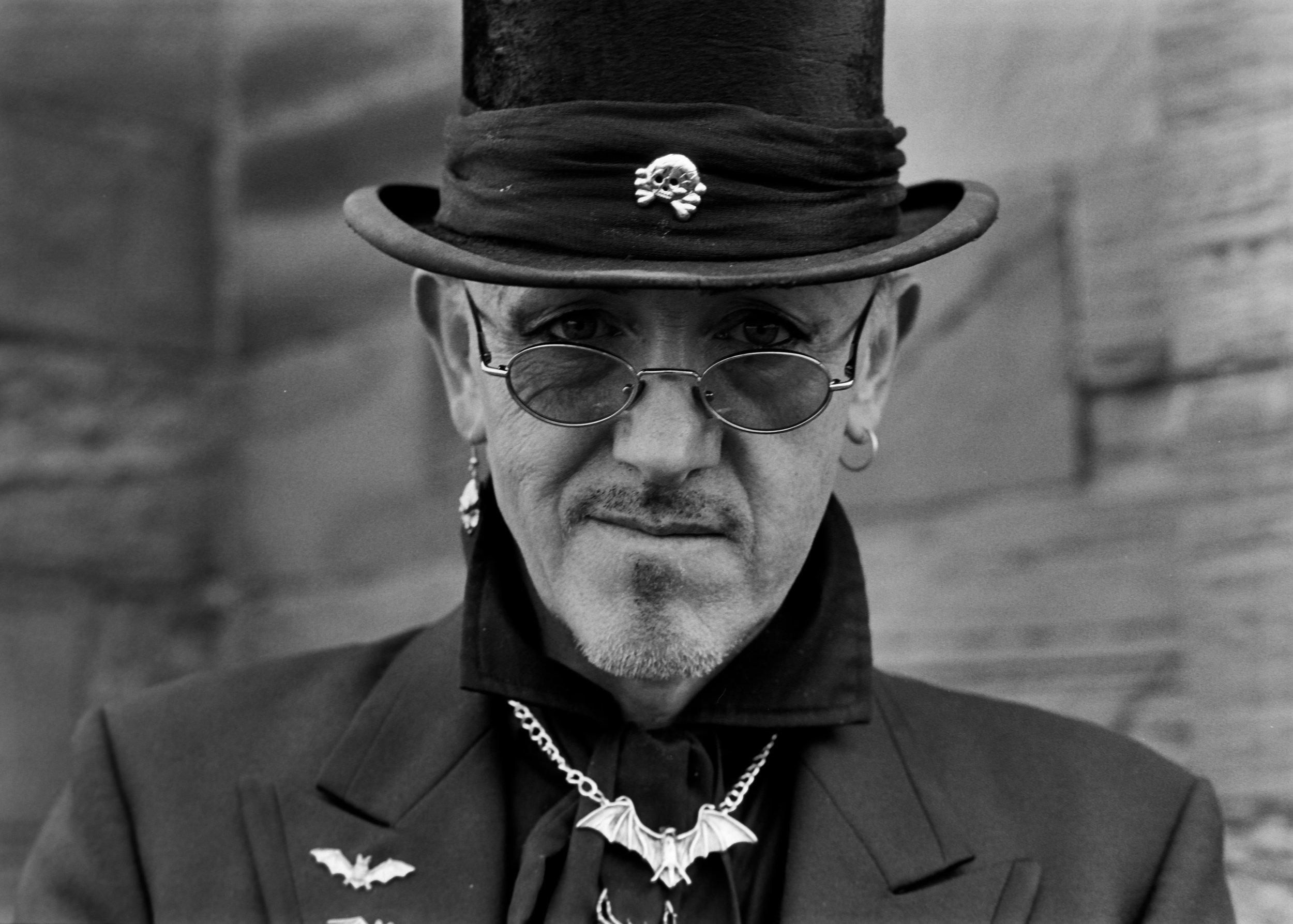Goth Subculture - Modern Tribes of England
I embarked on a project I have called Modern Tribes of England about 8 years ago which included the Goth subculture. My aim was to seek out and document groups that exist in our community. I use the term ‘Tribe’ to include groups with different reasons for coming together. For the purposes of this project a tribe can be an ethnic group such as Travellers, a group serving others like the Pearly Kings and Queens of London, a religious group like Pagans, a recreational group may be Morris Dancers and collection of people with a shared interest such as Car Enthusiasts or football supporters. The group may have a purpose as is the case with Climate-Change Activists. There are also groups that have been collectively known as subcultures such as Mods and Punks.
Members of these tribes gain a lot by being together. They form social networks that offer support, help, protection, lifestyle and well-being. Only a few will actually exist together on a daily basis such as Travellers and Circus Performers. They come together for specific reasons at intermittent times. These meetings may be to celebrate something such as the various seasonal days as is the case of pagans. They may meet up on days of dance or football matches or they may turn out to express their political views.
My approach has been to gain the confidence of the groups by explaining the Tribes project and in many cases, showing my work so they can see that I am a serious documentary photographer. The project is one that I will probably not finish as there is always a new group to discover, find out about and then spend time making photographs. The project has ethnographic and anthropological purpose. It is a story in photographs of our society at a point in time.
The small selection shown here is from the Goth series. This subculture drew from the dark cultural inspirations of the Victorian Gothic. Fashion adopted black materials and leather, silver jewellery, Christian symbols. The the monochrome 'look' of white faces and heavy dark eyes had its origins in the early German Expressionist Cinema of the 1930s with films such as The Cabinet of Dr Cagliari and Nostradamus.
It is a common misconception that Goths only like black. Although the subculture draws from the Gothic genre that is identifiable by its dark and shadowed view of the world, splashes of colour are utilized in its fashion. Make-up utilizes blues and reds and in the case of this young woman, it permeates her hair adornments and clothing. It demonstrates that the Goths have emerged from their drab underworld and are going beyond the rebellious into one of celebration. They want to stand out from the drabness of the northern weather and coal-stained buildings.
Historically, the Goth subculture has its origins in Post-Punk also drawing influences from the New Romantics, Belle Epoque, Glam as well as the Victorian era. Androgyny is an acceptable norm especially among male Goths who will wear makeup and dresses while women also wear sexualised clothing such as corsets and bodices, stocking and suspenders. The move away from traditional stereotypes allowed Goths to pave the way to loser expressions of sexual behaviour.
David Gilbert Wright
Website www.davidwright.photography
Instagram @davidgilbertwright
Instagram @davidgilbertwrightincolour
Instagram @f8documentary




